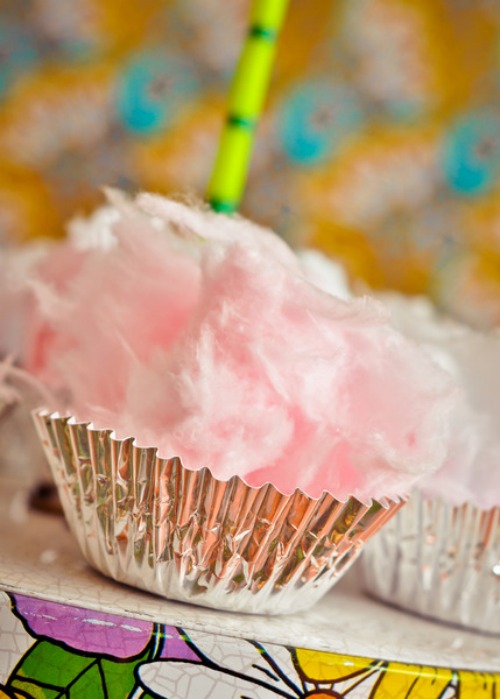Cotton candy or cotton candy is a wonderful experience for the happy times, a familiar sight at carnivals and fairgrounds. It's sugary-sweet, and no one seems to think that it can get sticky. It is a strange breath of ultra-fine strands of sugar, pleasant melts in your mouth.
Children are lured by the cloud like texture and are fascinated by how a big chunk of it immediately dissolve when they keep it in their lips. Adults love it too - they were probably brought back to childhood memories of when the circus came to town. But the warm, caramel scent of candy floss alone is enough to get you excited.
How to make it
Cotton Candy is basically sugar spun into a light and airy shape and then assembled on a stick or paper cone.
A cotton candy machine is used to spin granulated sugar. The colored sugar (pre-coated with the food coloring) is poured into a rapidly spinning the central plate, and in which it is subjected to heat. Sugar caramelize when heated, the spaces between the sugar molecules to expand, resulting in a thick syrupy liquid. The molten sugar is then spun through the small holes in the central cup, against the outer rim at high speed. The cooling so rapidly that it does not receive a change retreat along the crystal, so that it solidifies into fine Gossamer-like threads.
The sugar-containing filaments are accumulated on the internal walls of the outer bowl, as pastel-colored web. Now when the machine operator takes as its starting point: He fetch a stick or paper cone and throw sugar strands around it, forming a fluffy cloud of cotton candy.
The invention of Candy Floss Machine and the birth of the
Before the candy floss machine was invented, were sugar spun entirely by hand. It is caramelized in a pan and then tossed with a fork (and sometimes spun on a broomstick). Spun sugar were enjoyed in a variety of sweets and desserts since the sixteenth century, but it was not quite as fine as cotton candy as we know it today. Make it required a lot of time and patience, so it did not come cheap. It was mostly a luxury, a treat enjoyed only by wealthy people.
The candy floss machine was invented in 1897 by a candy-maker named John C. Wharton and a dentist named William J. Morrison. They worked together to invent a device that would reduce the effort of Spinning sugar to the benefit of candy makers and candy lovers alike. They debuted their brilliant innovation in the St. Louis World's Fair in Missouri, USA in 1904. They showed how to make a fluffy confection called "fairy floss" - sugar in the form of cotton-like chunks served in wooden boxes. It was a huge success and sold over 65,000 boxes in six months! The arrival of their machine made spinning sugar easier, quicker and therefore cheaper, then spun sugar was not just for rich people anymore.
Modern Cotton Candy
The treatment has become popular worldwide and are called different names. It is known as cotton candy in the U.S., candy floss in the UK, Ireland and Canada, fairy floss in Australia, Barbe papa in France and sugar line in Italy.
The modern candy floss machine has evolved to be leaner, faster and more efficient, but retains most of Wharton and Morrison original design. Some models have a space that provides three different colors of sugar in a single race. Large and heavy machinery can produce cotton candy in bulk.
Confectionery unit itself has evolved too. Although pink is still the most popular, it now has different colors and flavors - sometimes several stripes of different flavors can come in a single portion. There is even prepacked piles of cotton candy, which can be purchased from the grocery stores, but such tend to be less fluffy. Yet there is nothing like freshly spun candy floss, fluffy, warm, caramel-scented, spun directly from a candy floss machine.
welcome to www.bridaldressesshop.co.uk tom find perfect wedding dress .

